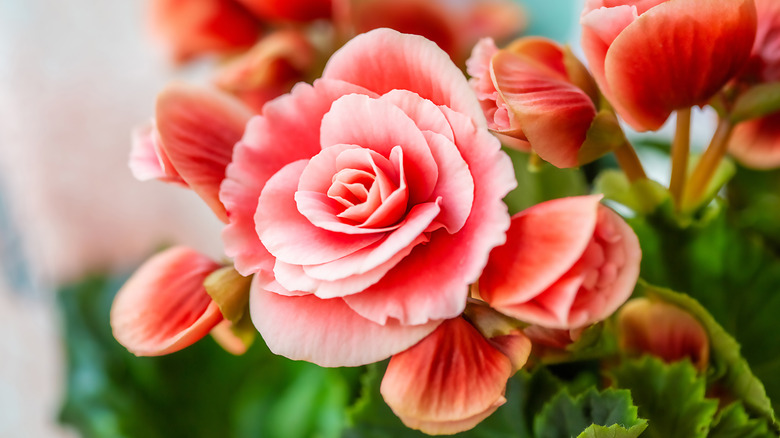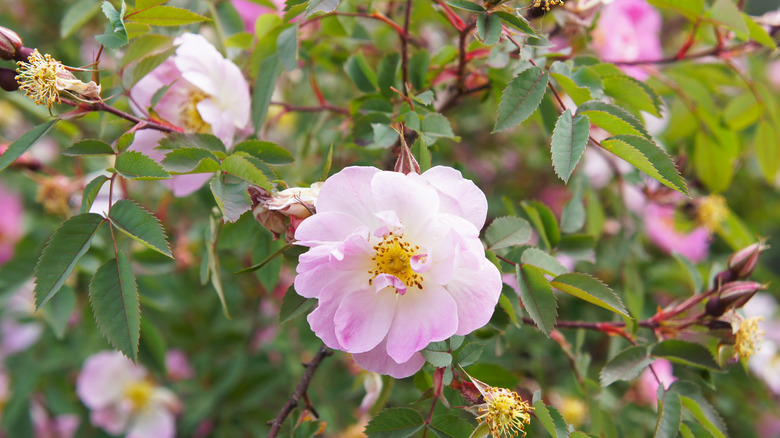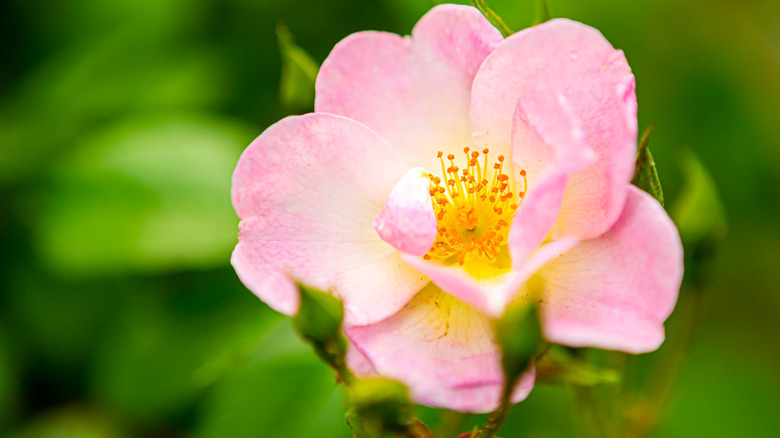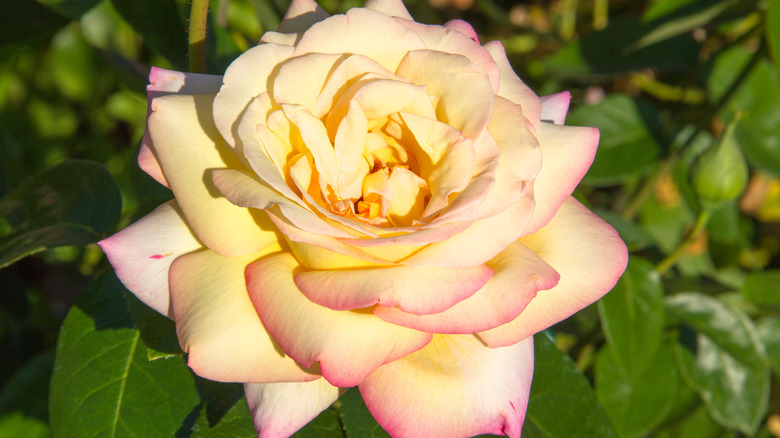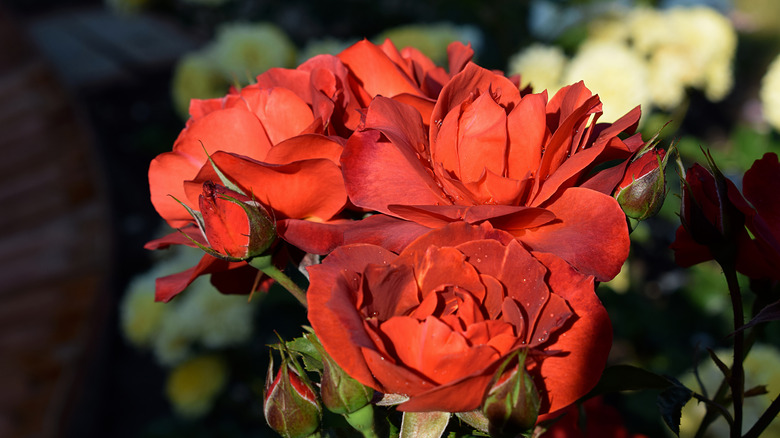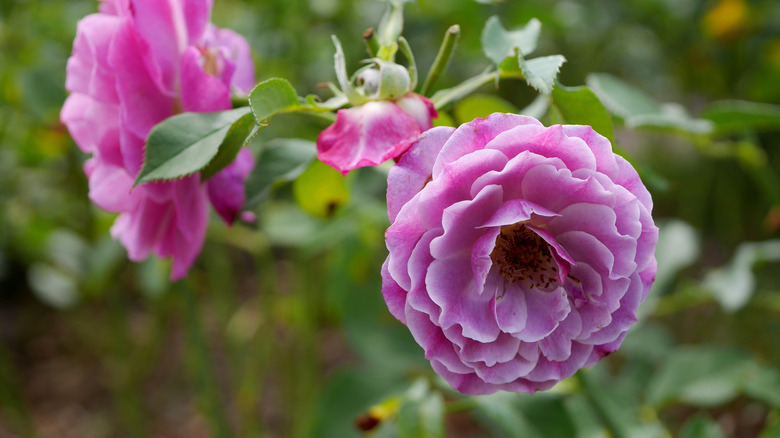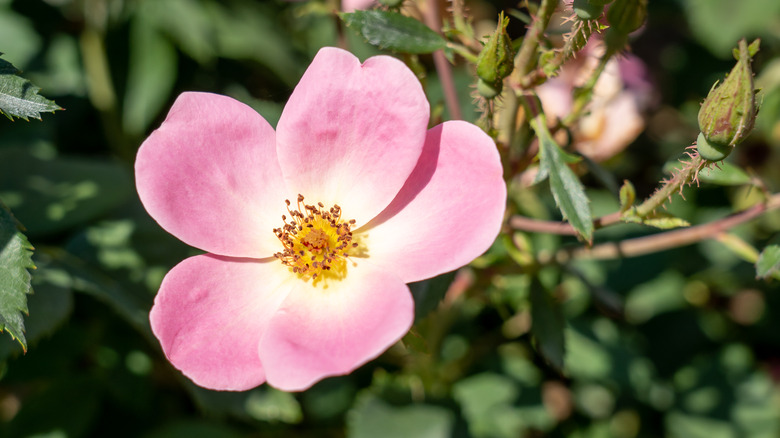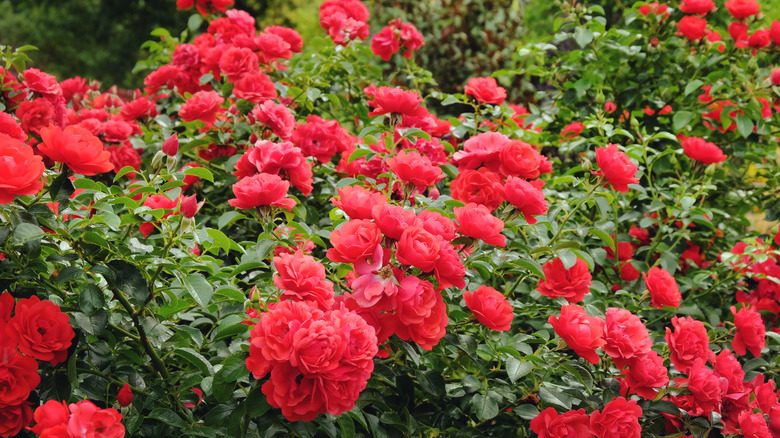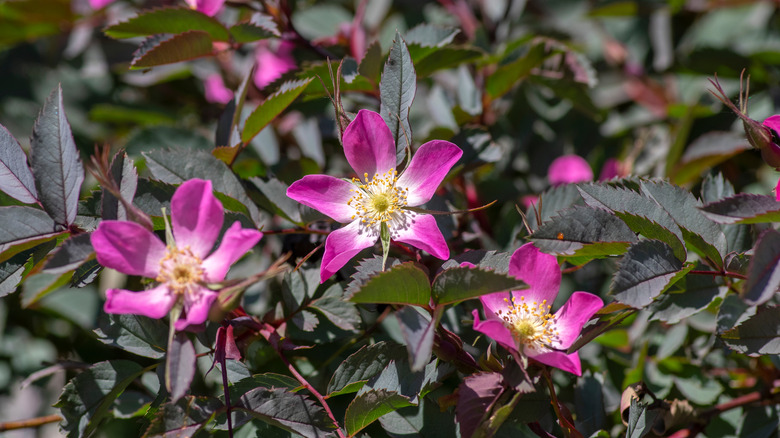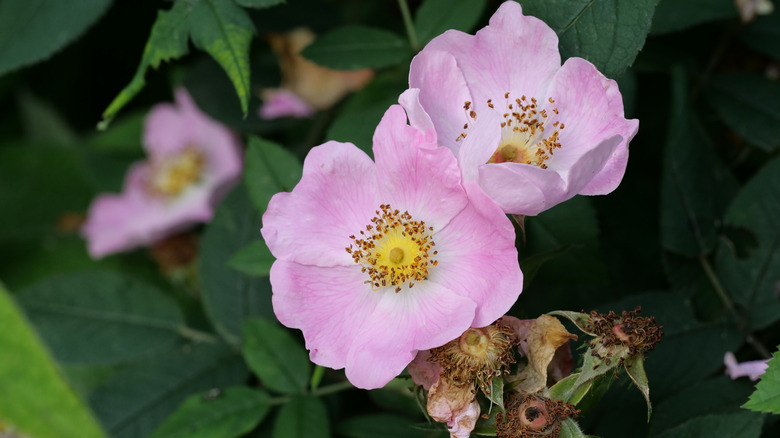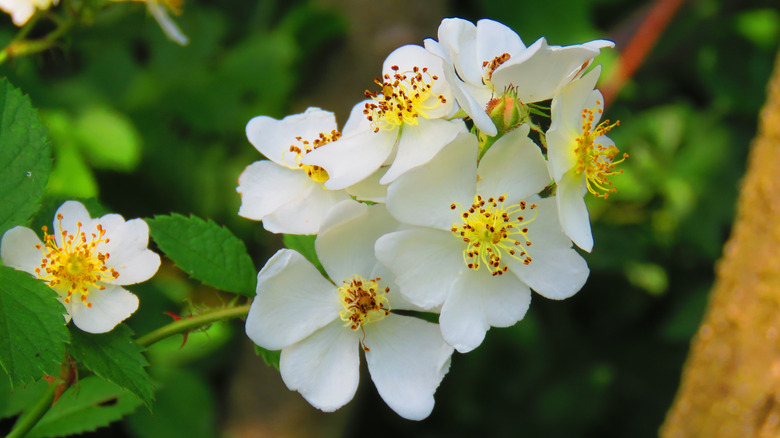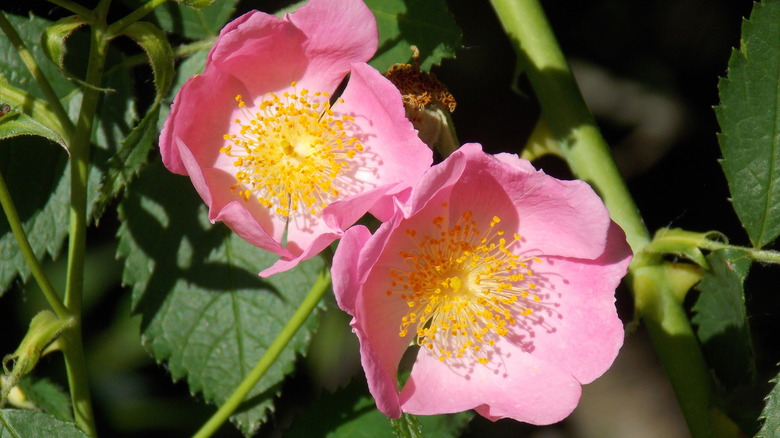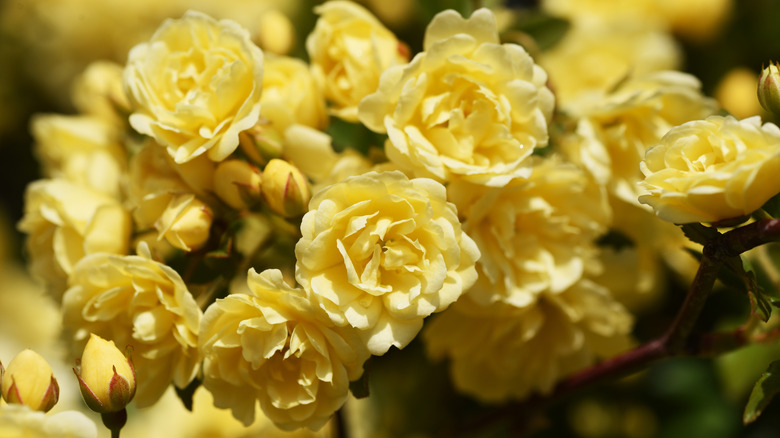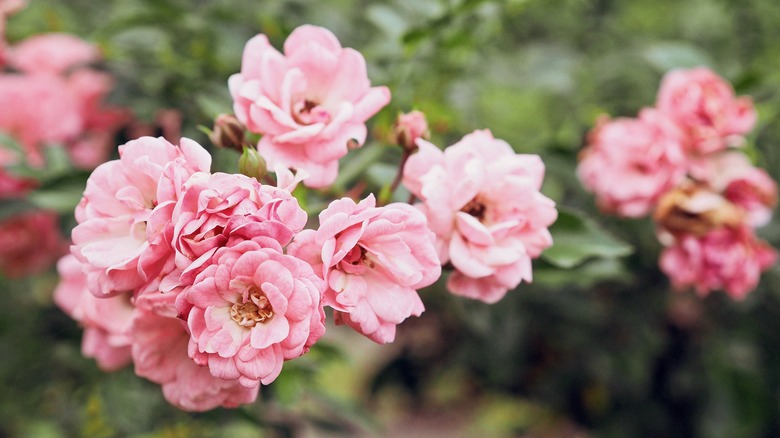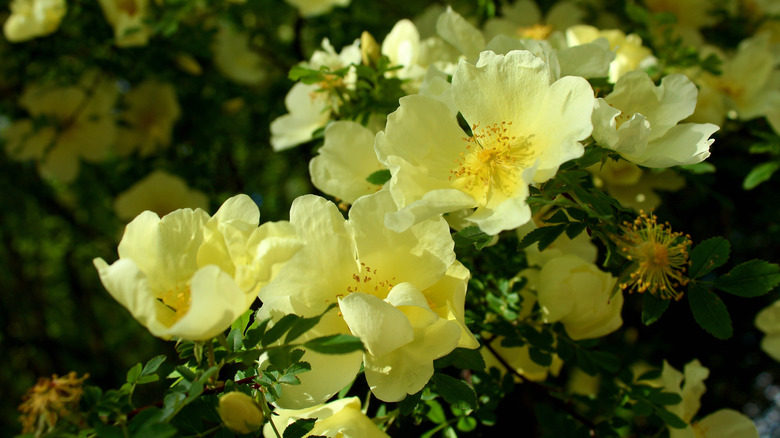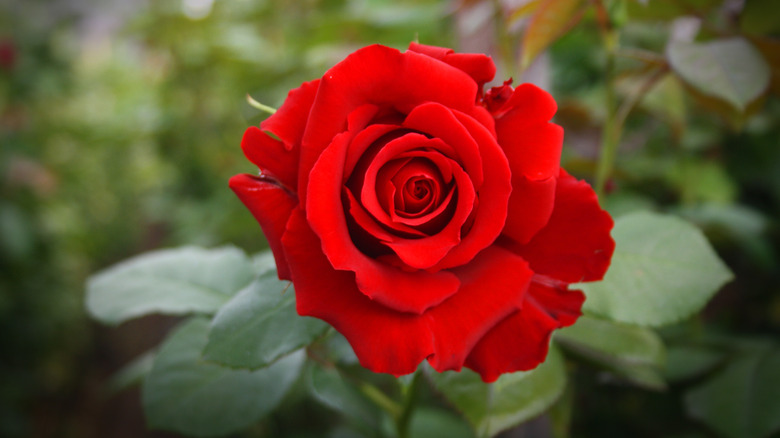15 Stunning Roses You Should Grow In Your Garden
Roses are some of the most readily recognized and well-loved flowers, both for floral arrangements and gardening. The beauty and sweet smell of a rose garden is something that is enjoyed by almost everyone. Roses refer to the rosa genus, which iNaturalist states has over 300 species alone, not including the tens of thousands of cultivars within those species. In addition, most species also have edible flower petals, which can be made into rose water by simply soaking the petals. This on its own is both delicious and beneficial to your health, as is the rosehip fruit that certain species also produce, according to Glam Fleur.
Planting roses is an excellent way to add a romantic, classic touch to your yard or garden. With the extensive range of cultivars, their unique behaviors, and individual care needs, cultivating a large, diverse rose garden can also be a wonderful new hobby for both beginner and expert gardeners alike.
1. Swamp rose
The swamp rose, or rosa palustris, is a wild rose that gets its name from its native growing conditions, which include wet grounds like swamps, marshes, and stream banks, explains North Carolina Extension Gardener Plant Toolbox. They are deciduous shrubs that produce pink flowers in the summer that turn red in the fall.
Swamp rose bushes tend to grow anywhere from 3 to 6 feet tall and wide. They grow best in USDA hardiness zones 4 through 9, preferring at least six hours of full sun a day. Swamp roses grow in acidic, rich, and boggy soil.
2. Sweet briar rose
The sweet briar rose (rosa rubiginosa) is another wild species of rose that is native to Europe and West Asia, according to Santa Fe Botanical Garden. They produce light pink flowers, blooming in the spring or summer. Once their blooms die, they produce bright red rosehip fruits.
These roses are grown best in USDA hardiness zones 4 through 9, preferring full sunlight. They grow best in well-drained, loamy soil conditions. Sweet briar roses self-fertilize (along with the help of bees and butterflies), and a well-maintained plant can grow anywhere from 6 to 10 feet tall and wide.
3. Peace rose
The peace rose is a hybrid tea rose cultivar. Regan Nursery notes that hybrid tea roses are most commonly used in floral arrangements thanks to their classic long stem. This particular cultivar was introduced in 1945 and can grow up to 6 feet tall, states Dave's Garden.
Peace roses grow best in USDA hardiness zones 4 through 9, with flowers blooming repeatedly from late spring to early fall. The flowers are light orange or yellow with pink ombre tips. Give them full sun and slightly acidic, well-draining soil, and be careful not to overwater.
4. Hot cocoa rose
Hot cocoa roses belong to the floribunda cultivar, which, as Heirloom Roses notes, were bred to be weather hardy with continuous blooms. This specific rose was created in 2002, according to 1001 Landscaping Ideas, and has a fruity scent with dark red, almost burnt-looking petals.
Hot cocoa roses grow best in USDA hardiness zones 6 through 10 and grow anywhere from 3 to 4 feet tall and wide (via Dave's Garden). Provide them with at least six hours of direct sun a day and plant in well-draining, organically rich soil.
5. Wild blue yonder rose
Wild blue yonder rose (rosa wekisoblip) is a rose from the grandiflora cultivar, which the University of Illinois Extension explains was invented in 1954, and is a cross between the floribunda and hybrid tea roses, with slightly larger flowers.
Wild blue yonder roses have vivid purple flowers that bloom from June to October in USDA hardiness zones 5 through 9. They can grow up to 5 feet tall, with an average width of 4 feet. Provide full sunlight (around six hours a day), and a well-draining but moist soil, being careful not to waterlog them.
6. Rainbow knock out rose
Rainbow knock out roses (rosa radcor) are a part of the knock out cultivar, which is also a brand. Knock Out describes this cultivar as easy to grow and care for with consistent blooms, disease-resistant, and self-cleaning.
Rainbow knock out roses are a compact variety with coral petals and a bright yellow center, growing best in USDA hardiness zones 4 through 11. They need full sunlight, though they can bloom from just three hours a day. Gardenia also notes that they need rich, fertile, and well-draining yet moist soil conditions.
7. Red flower carpet rose
As opposed to growing as a traditional shrub, red flower carpet roses (rosa noare) grow as a ground cover that spreads out, which is where it gets its common name, notes the North Carolina Extension Gardener Plant Toolbox. It only grows around 2 feet in height, but can grow up to 4 feet in width.
The red flowers have a lengthy bloom time, from spring all the way through fall. They grow best in USDA hardiness zones 5 through 9, preferring at least six hours of direct sunlight. They enjoy clay-rich, sandy, or loamy soil.
8. Shrub rose
Shrub roses (rosa glauca) are a wild species of rose that produce small, bright pink, five-petal flowers. According to Missouri Botanical Garden, they grow natively in mountainous regions of central and southern Europe, though they can be grown ornamentally in USDA hardiness zones 2 through 8.
This shrub is loved for both its flowers and foliage. The flowers will look best in full, direct sun, whereas the foliage enjoys partial shade. The plant itself requires slightly moist, loamy, well-draining soil that is organically rich. Consider mulching in the summer to give them a boost.
9. Carolina rose
The Carolina rose, also referred to as the pasture rose, is a wild variety that grows naturally in open woods and prairies, as well as near streams, swamps, and other low-lying wet ground, notes the North Carolina Extension Gardener Plant Toolbox.
The soft pink petals will bloom best in USDA hardiness zones 4 through 9. The flowers can survive partial shade but will be their healthiest (and most disease-resistant) in full sun. Carolina roses prefer wet but still well-draining, loamy soils that are either clay-rich or sandy. Carolina roses are spring and summer bloomers.
10. Multiflora rose
Multiflora roses are a wild variety that produces white flowers with a bright yellow center. Despite their attractive appearance, they are considered invasive in many areas, warns PennState Extension, so avoid planting them if you live in one of those states.
They grow best in USDA hardiness zones 5 through 9 (via Gardenia). Multiflora roses can grow up to 15 feet tall and up to 18 feet wide. For the best results, provide them with full sun and plant them in a fertile, moist, and well-draining soil that is naturally or artificially humus-rich.
11. Prairie rose
Prairie roses (rosa setigera) are also referred to as climbing roses due to their climbing and trailing growth patterns. They bloom vivid coral-colored flowers starting in the early summer, and produce rose hips after the blooming season has ended, per the RHS.
Provide them with full sun to partial shade conditions to grow, although full sunlight is best for appearances. They prefer moist but well-draining soil, and either chalky, clay-rich, loamy, or sandy soil conditions.
12. Lady Banks rose
Lady Banks rose (rosa banksiae) is another type of trailing wild rose that blooms mid-spring through early summer, explains the North Carolina Extension Gardener Plant Toolbox. The flowers are small, yellow, and thornless, and the plant can climb as high as 40 feet.
The slightly fragrant flowers will grow best in USDA hardiness zones 6 through 10. As with almost all roses, they will look the best in full sun but can survive partial shade in the afternoon. They are also known to attract hummingbirds, so consider this when choosing the best location.
13. The Fairy rose
The fairy rose is part of the polyantha rose cultivar, which is quite similar to the multiflora rose. They are very disease resistant and incredibly hardy and tend to be smaller and more compact, via Dave's Garden.
This variety produces gorgeous pink flowers that bloom in May until the first frost of the winter and grow best in USDA hardiness zones 5 through 9, per Missouri Botanical Garden. Provide them with full sun and a well-draining, medium moist, slightly acidic, loamy soil. This variety tends to grow around 3 feet tall and wide.
14. Canary bird rose
Canary bird roses (rosa xanthina) get their common name from their lovely, canary yellow petals. They grow best in USDA hardiness zones 5 through 9, according to Gardenia, who also states that they're one of the first to bloom of the season. Well-cared-for shrubs can also produce a second round of blooms in the fall.
Canary bird roses are disease resistant and will grow best in full sunlight. They prefer fertile, rich, moist, and well-draining soil conditions and can benefit from annual fertilizing and mulching in winter or spring.
15. Mister Lincoln rose
Mister Lincoln is another hybrid tea rose that was created in 1964, producing fragrant, rich, red roses that start blooming in the late spring and continue until winter, notes Dave's Garden. They grow best in USDA hardiness zones 5 through 10.
Mister Lincoln roses should be grown in full sun conditions for the best results, as should all roses. This cultivar prefers slightly to mildly acidic soil, which can be manufactured with soil amendments. Healthy specimens can grow as tall as 8 feet.
